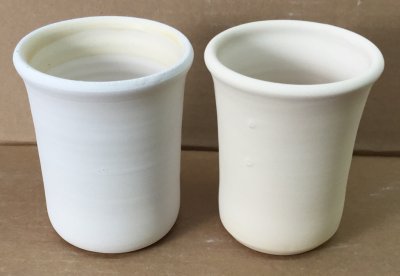Glossary for ceramics bisque refers to pottery that has been fired once and remains unglazed.
Define bisque in ceramics.
Ceramic bisque is not twice baked only until after the second glaze firing.
Bisqueware definition is biscuit ware.
A pastel pinkish brown color similar to that of unglazed clay.
Bisque refers to ware that has been fired once and has no chemically bonded water left in the clay bisque is a true ceramic material although the clay body has not yet reached maturity this stage is also sometimes called biscuit or bisc.
This is actually fired at a low temperature which means that it still has some extra firing in it.
Casting a means of making multiples of the same form by pouring slip or pressing plastic clay into plaster or bisque molds.
How to use bisqueware in a sentence.
The clay is completely dry.
Confusingly biscuit may also be used as a term for pottery at a stage in its manufacture where it has not yet.
Bisqueware is the term for pots that have been bisqued fired for the first time the pots may also be called biscuit ware.
So the use of this terminology is interesting since ceramic bisque really is baked only once.
Now bisque is often considered a true ceramic even though the clay body isn t fully matured.
The term bisque is of french origin and literally means twice baked.
Bisque synonyms bisque pronunciation bisque translation english dictionary definition of bisque.
Bisque definition is a thick cream soup made with shellfish or game.
A rich creamy soup made from meat fish or shellfish.
Biscuit also known as bisque refers to any pottery that has been fired in a kiln without a ceramic glaze this can be a final product such as biscuit porcelain or unglazed earthenware often called terracotta or most commonly an intermediary stage in a glazed final product.
This is actually fired at a low temperature which means that it still has some extra firing in it.
Engobe is very much like a slip but the differentiating factor is that engobes are formulated using fritted material which reduces shrinkage due to this change in components engobes are used on pottery that has already been bisqued the use of engobes can actually be traced back to 3000 bc by digs that have uncovered colored pottery.

